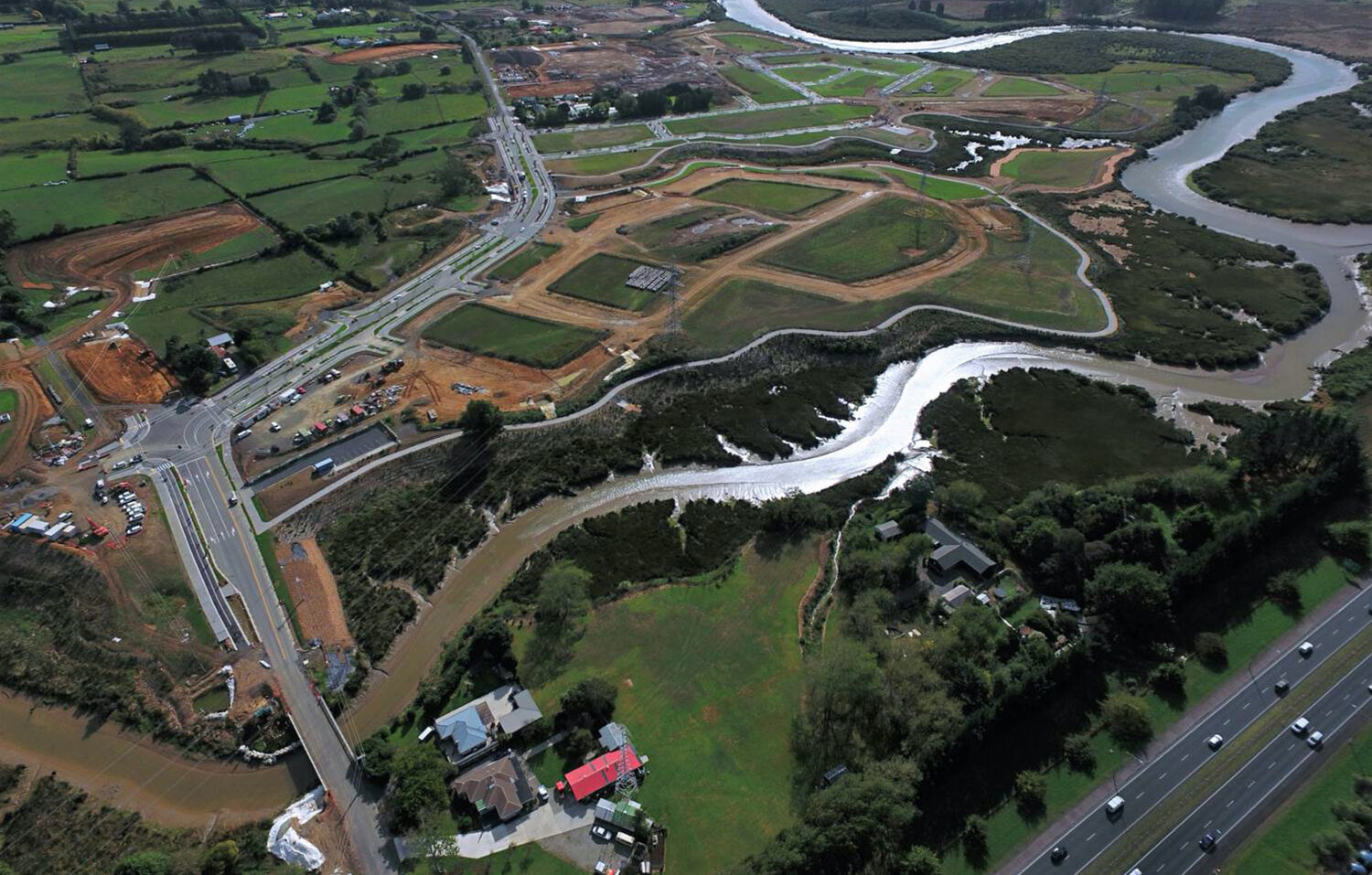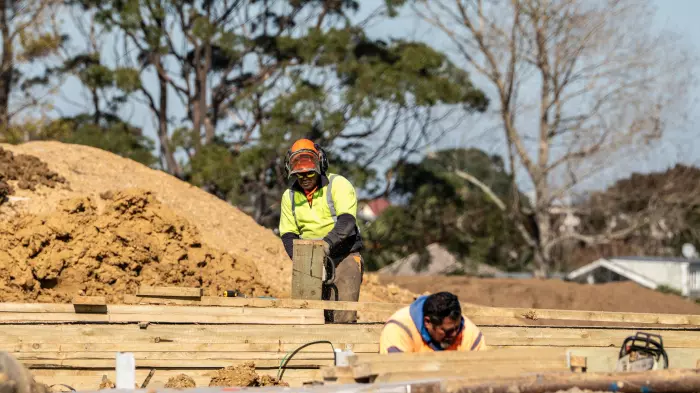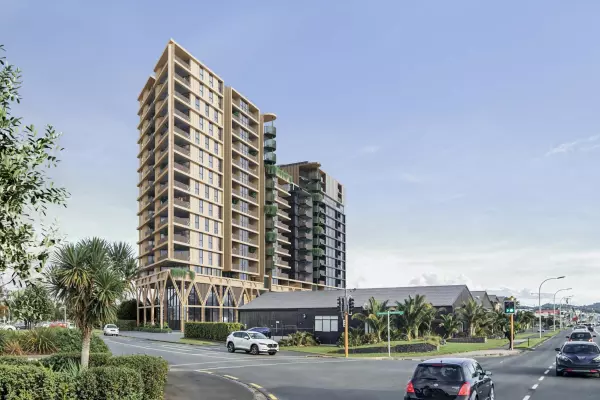Charles Ma, the developer of the $1 billion Auranga planned community in Karaka-Drury West, says he was blindsided by Auckland Council's proposal to hike development charges six-fold to $84,900 per new home.
Contributions billed to greenfield developers at Drury are currently charged at between $11,000 to $18,300 for a standard household unit equivalent (EHU) of between 100 and 249 square metres.
That's to help pay for upgrades to local roads, parks, drainage and stormwater.
Developed as a “city within a city”, Auranga is the 85-hectare flagship for Ma’s development firm Ma Development Enterprises (MADE).
It’s taken the young developer, now 30 years old, seven years to get here but the main infrastructure of the township is now built and residents started moving into the first new houses last year.
Ma said the likely change to contributions, due to take effect from January, was disappointing after the firm had worked with the local authority for years and had invested “tens of millions” in upfront water and wastewater infrastructure, roading and bridges, walkways and coastal reserves.
About a third of the 3,000 planned homes have already been pre-sold, and Ma expects the build rate through partners like GJ Gardner, Stonewood Homes, Signature and Jennian to accelerate in earnest from next year to about 400 homes a year.
That pegs the cost of the new development contribution fee at about $34 million a year, which will "inevitably" have to be passed onto buyers – many of those young families.
Ma also recently announced consenting progress on another planned community, at Rotokauri North, a 122ha development about 13 kilometres north of Hamilton's CBD.
In addition to the construction of 2,000 homes, plans include a retirement village, primary school and sports park.
The Rotokauri North development, like Auranga, will include ‘champion homes’, essentially a rebranded Kiwibuild model with sale prices of between $600,000 to $630,000 aimed at first home buyers.
Variable rates
At Rotokauri, 200 of those homes are being partially funded with a $100m investment by Australian commercial real estate debt and equity investment group MaxCap.
Ma said the comparable contribution for the Hamilton development is between $25,000 to $30,000 per dwelling. “It’s still significant but it’s something that we feel is more reasonable.”
Just down the road at Rotokauri South, rates are $93,226 per EHU, being levied by the Hamilton Council to cover costs of about $40m to remediate stormwater issues.
Residential development contributions, or building impact fees, can be highly variable per urban area.
Wellington’s currently vary from about $3,261 to $10,900 per EHU, while Tauranga City Council has recently announced it will hike its rates from $19,708 to $28,557 on Feb 1, largely to help fund the Waiāri Water Supply Scheme and trunk water mains.
Under its long-term plan, the Auckland Council has set aside $400m in spending for local roads, parks and upgraded drainage and stormwater in the Drury area over the next 10 years.
Over that period, it is slated for about 12,000 new homes across several subdivisions.
Auckland Council's financial policy manager Andrew Duncan said the council expects to recoup about $267m of that through development fees from local ratepayers and contributions from national land transport agency Waka Kotahi.
The government has also earmarked the area for $2.4b in spending under its New Zealand upgrade infrastructure package, which includes upgrades to the state highway and Mill Rd, extending the electrified rail network to Pukekohe and the building of two new railway stations.
Duncan said the council had looked in "some detail" at the infrastructure required to support the building of about 22,000 houses in Drury, and said it expects to invest about $2.5b in transport, open space and community infrastructure over the next three decades.
That’s enough housing for about 50,000 people, about the same footprint as Napier. Ultimately, the area could be home to about 200,000 people.
A starting point
Duncan said the council picked Drury to kick off the new contributions regime because “that’s the area where we have the best information”.
The new policy will then gradually roll out to other “investment priority” housing areas such as Mangere, Mt Roskill, Oranga, Northcote, and Tāmaki.
But Ma, who estimates MADE’s current pipeline of work at $1.5b, slammed the council’s fee increases as “another example of applying a blunt and poorly researched measure across all developers at Drury”.
 Auranga, infrastructure costs excessive (Image: MADE)
Auranga, infrastructure costs excessive (Image: MADE)Ma told BusinessDesk it will impact the viability of developing higher density communities as paying six times the development contributions will “eat up half our margins”.
He said those costs will be passed on to the buyers.
"It’s another decision that goes against the goal of delivering young families more affordable homes in South Auckland.
“We’ve done pretty much most of the core infrastructural upgrades, so now to be asked for this contribution, seems like double-dipping.”
Auckland Council acting chief economist Shane Martin said there is enough local and international evidence to suggest that contribution rates don’t impact the relative affordability of housing.
Price takers
Martin's argument, in essence, is that there is little room for house prices to increase because they’re already at their “maximum willingness and ability to pay”.
That makes developers “price takers”, he said, with all changes in the market ultimately flowing through to land value.
While he accepted that developers will no doubt try to pass those costs through to house prices, there is recent evidence from Hamilton and the former Waitakere City Council which suggests they “probably can’t”.
Hamilton’s increases, introduced in 2018, amounted to between 30% and 80%, while Waitakere fees were increased by a quarter. The latter did, however, slow development in some areas.
The ‘international’ argument relates primarily to research out of Queensland, where a policy change in respect of its ‘impact charges’ in 2011 was said to have had zero impact on house prices. However, that was more linked to price ‘caps’ which created volatility and inconsistency in DC pricing.
But it is not a one size fits all approach for the multiple developers across the almost 2,000ha Drury area, which covers Opāheke in the north-east, Drury in the southeast, and part of Karaka, or Drury West.
Private agreements
Stevenson Group’s 361ha Drury South Crossing (DSC) industrial land development, which also includes a 2,600 home residential development at the 50ha Hunua Views subdivision, is not subject to the new policy.
That’s after DSC entered into a private agreement with the council in 2017 and will continue to pay under the contribution policy 2016 variation.
DSC chief executive Stephen Hughes wouldn’t be drawn on the terms of the agreement but said 90ha of the development will be dedicated to community facilities, including wetlands, walking and cycling tracks and a new childcare centre.
Meanwhile, infrastructure costs related to three other developments, covering 328ha of land at Drury East, are proving a major distraction to developers Kiwi Property, Oyster Capital and Fulton Hogan.
They have applied for land change requests for a combined 7,000 new houses, 58,000 sqm of office space and 119,000 sqm of retail.
Duncan said while the council supports the urbanisation of Drury, there’s no agreed infrastructure financing and funding solution in place so they aren’t supporting the plan changes.
MADE is facing a similar problem with approvals for its Auranga town centre, which already has funding commitments in place. He will have to wait until those plan changes are signed off by planning commissioners, hopefully in early November, before he can get construction work underway early next year.
While Drury is set to become an epicentre of growth for the region, Ma is questioning why Auckland Transport, KiwiRail and Waka Kotahi have chosen a “remote paddock” two kilometres away from residential and commercial areas under development to locate the Drury West train station.
“This is a fully government-funded station, so it defies common sense to locate it in an area that is not slated for development for another 15 to 20 years.”
According to Ma, the council and central government talk the good talk on quality urban design and sustainable city making for future generations, but their actions “simply don’t stack up”.














